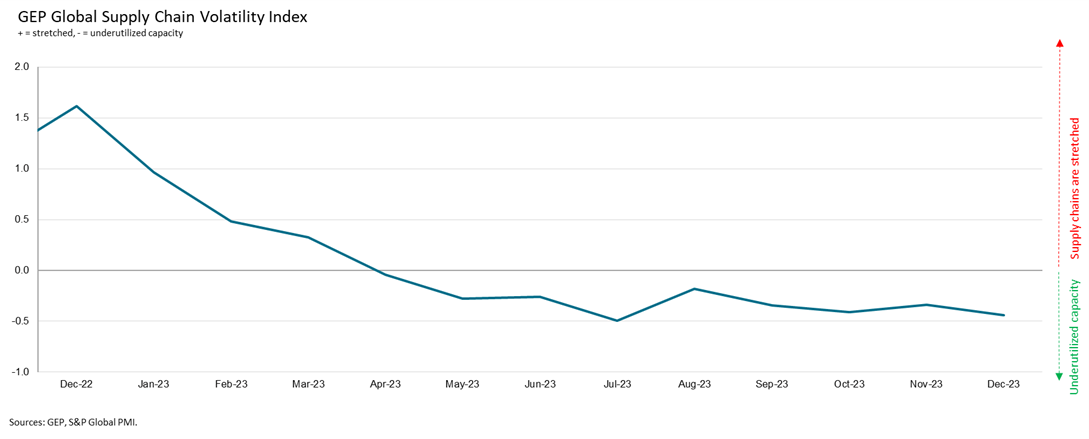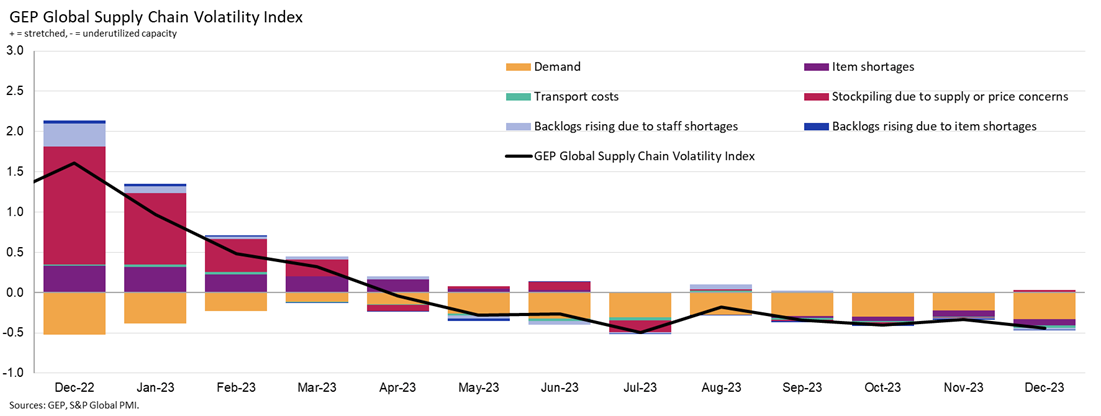-
GEP Software
-
- Procurement Software
- Direct Procurement Software
- Indirect Procurement Software
- Unified Source-to-Pay
- Source-To-Contract Software
- Procure-to-Pay
- Midsize & High Growth Enterprises
- Key Capabilities
- Spend Analysis
- Sourcing
- Contract Lifecycle Management
- Supplier Lifecycle Management
- Third-Party Risk Management
- Purchasing
- Payments
- Data Analytics and Reporting
- Do more with GEP SMART
- Intake Management & Orchestration
- Intelligent Category Management
- Tail Spend Management
- Cost Data & Analytics (GEP COSTDRIVERS)
- AI-First Supply Chain Management
- Supply Chain Visibility and Execution
- Logistics Visibility
- Inventory and Warehouse Management
- GEP Multienterprise Collaboration Network
- Supply Chain Control Tower
- Field Services
- Supply Chain Collaboration & Planning
- Supply Chain Planning
- Purchase Order Collaboration
- Forecast Collaboration
- Capacity Collaboration
- Quality Management Software
- Should-Cost Modeling
- Direct Material Sourcing
-
-
GEP Strategy
-
GEP Strategy
Unrivaled supply chain and procurement expertise + the transformative power of AI
Supply Chain Consulting
- Environmental, Social and Governance
- Sustainability Consulting Services
- Socially Responsible Sourcing
- Scope 3
- Demand and Supply Chain Planning
- Collaborative Planning
- Source To Contract
- Procure To Pay
- Inventory Strategy & Management
- Operations & Manufacturing Excellence
- GEP Total Inventory Management Solution
- Network Strategy & Optimization
- Warehousing & Transportation Management
-
-
GEP Managed Services
-
GEP Managed Services
World-class skills, experience and know-how — amplified by the power of AI
-
- Supply chain spare capacity rose in Europe, Asia and North America in December as slack reaches its greatest level since July 2023
- Notably, excess capacity at Asia’s suppliers rises to a level not seen since June 2020, suggesting a manufacturing recovery is still some way off
- Input demand dropped more sharply in North America, which had been relatively resilient, driven by producers of intermediate and capital goods
- Recessionary conditions persist in Europe, with purchasers at the region’s manufacturers cutting back at a pace rarely surpassed in two decades of data
Clark, N.J., Jan. 12, 2024 – The GEP Global Supply Chain Volatility Index — a leading indicator tracking demand conditions, shortages, transportation costs, inventories and backlogs based on a monthly survey of 27,000 businesses — showed global supply chain capacity going underutilized to the greatest extent since July at the end of 2023, with the index falling to -0.44 in December, from -0.34 in November. This marked the ninth successive month of spare capacity across global supply chains, with slack at producers at one of the highest levels since COVID-19 shutdowns in early 2020.
Overall, demand for raw materials, commodities and components was at its most subdued since the start of 2023, boding ill for near-term global production levels. Our data revealed a persistence of recessionary conditions in Europe, with purchasing at the region’s manufacturers falling at a pace rarely surpassed in two decades of data.
Order books for suppliers to North America and Asia, two parts of the globe that fared much more robustly than elsewhere last year, also deteriorated in December, showing fresh signs of weakness in major economies. Notably, Asian supply chains were the most underutilized in three-and-a-half years, with manufacturing industries in the region’s major economies such as Japan, South Korea and Malaysia seeing a worsening. However, slack in North America’s supply chains remained far less widespread than mid-2023’s zenith. In addition to soft supplier order books, the subdued current state of the global manufacturing industry was also highlighted by historically low reports of item shortages and backlogs, suggesting excess global supply levels, which will put further downward pressure on the prices of goods.
“Rising spare capacity at suppliers worldwide means that the end to the global manufacturing recession is still some way off,” explained David Doran, vice president, consulting, GEP. “Moreover, orders at intermediate and capital goods manufacturers are still slowing, which indicates stronger headwinds ahead, providing companies with greater leverage to drive down prices in 2024.”

Interpretating the data:
- Index > 0, supply chain capacity is being stretched. The further above 0, the more stretched supply chains are.
- Index < 0, supply chain capacity is being underutilized. The further below 0, the more underutilized supply chains are.
DECEMBER 2023 KEY FINDINGS
- DEMAND: The downturn in demand for raw materials, components and commodities worsened in December. Purchasing cutbacks were at the strongest seen since the beginning of 2023 as orders from clients in North America and Asia slumped. Demand weakness remained its most apparent in Europe, however.
- INVENTORIES: Reports of safety stockpiling due to price or supply concerns held steady at its long-term average, showing little appetite among businesses to hold excess in their inventories.
- MATERIAL SHORTAGES: Reports of item shortages are at their lowest level since January 2020.
- LABOR SHORTAGES: The number of companies experiencing backlog accumulation due to a lack of staff fell further in December, indicating that workforce capacity is not restricting suppliers.
- TRANSPORTATION: Global transportation costs are running below their long-term average and dipped to a five-month low in December.

REGIONAL SUPPLY CHAIN VOLATILITY
- NORTH AMERICA: The index fell to -0.39, from -0.21, its lowest level since August, but still well below its recent bottom of -0.85 in June.
- EUROPE: The index fell to -0.92, from -0.85, its lowest in three months and consistent with severe fragility within the region’s manufacturing sector.
- U.K: After rising to -0.58 in November, its highest since April, the index dropped to -1.05 in December, its lowest since April 2020, thereby highlighting considerable weakness across U.K. manufacturing.
- ASIA: The index fell to -0.42, from -0.24, its lowest level in the post-pandemic era and pointing to growing signs of weakness within the globe’s key hub for goods production.
For more information, visit www.gep.com/volatility
Note: Full historical data dating back to January 2005 is available for subscription. Please contact economics@spglobal.com.
The next release of the GEP Global Supply Chain Volatility Index will be 8 a.m. ET, February 13, 2024.
About the GEP Global Supply Chain Volatility Index
The GEP Global Supply Chain Volatility Index is produced by S&P Global and GEP. It is derived from S&P Global’s PMI® surveys, sent to companies in over 40 countries, totaling around 27,000 companies. The headline figure is a weighted sum of six sub-indices derived from PMI data, PMI Comments Trackers and PMI Commodity Price & Supply Indicators compiled by S&P Global.
- A value above 0 indicates that supply chain capacity is being stretched and supply chain volatility is increasing. The further above 0, the greater the extent to which capacity is being stretched.
- A value below 0 indicates that supply chain capacity is being underutilized, reducing supply chain volatility. The further below 0, the greater the extent to which capacity is being underutilized.
A Supply Chain Volatility Index is also published at a regional level for Europe, Asia, North America and the U.K. For more information about the methodology, click here.
About GEP
GEP® delivers AI-powered procurement and supply chain solutions that help global enterprises become more agile and resilient, operate more efficiently and effectively, gain competitive advantage, boost profitability and increase shareholder value.
Fresh thinking, innovative products, unrivaled domain expertise, smart, passionate people — this is how GEP SOFTWARE™, GEP STRATEGY™ and GEP MANAGED SERVICES™ together deliver procurement and supply chain solutions of unprecedented scale, power and effectiveness. Our customers are the world’s best companies, including more than 550 Fortune 500 and Global 2000 industry leaders who rely on GEP to meet ambitious strategic, financial and operational goals.
A leader in multiple Gartner Magic Quadrants, GEP’s cloud-native software and digital business platforms consistently win awards and recognition from industry analysts, research firms and media outlets, including Gartner, Forrester, IDC, ISG, and Spend Matters.
GEP is also regularly ranked a top procurement and supply chain consulting and strategy firm, and a leading managed services provider by ALM, Everest Group, NelsonHall, IDC, ISG and HFS, among others. Headquartered in Clark, New Jersey, GEP has offices and operations centers across Europe, Asia, Africa and the Americas. To learn more, visit www.gep.com.
About S&P Global
S&P Global (NYSE: SPGI) S&P Global provides essential intelligence. We enable governments, businesses and individuals with the right data, expertise and connected technology so that they can make decisions with conviction. From helping our customers assess new investments to guiding them through ESG and energy transition across supply chains, we unlock new opportunities, solve challenges and accelerate progress for the world. We are widely sought after by many of the world’s leading organizations to provide credit ratings, benchmarks, analytics and workflow solutions in the global capital, commodity and automotive markets. With every one of our offerings, we help the world’s leading organizations plan for tomorrow, today.
Media Contacts
| Derek Creevey Director, Public Relations GEP Phone: +1 732-382-6565 Email: derek.creevey@gep.com |
Joe Hayes Principal Economist S&P Global Market Intelligence T: +44-1344-328-099 Email: joe.hayes@spglobal.com |
Disclaimer
The intellectual property rights to the data provided herein are owned by or licensed to S&P Global and/or its affiliates. Any unauthorised use, including but not limited to copying, distributing, transmitting or otherwise of any data appearing is not permitted without S&P Global’s prior consent. S&P Global shall not have any liability, duty or obligation for or relating to the content or information (“Data”) contained herein, any errors, inaccuracies, omissions or delays in the Data, or for any actions taken in reliance thereon. In no event shall S&P Global be liable for any special, incidental, or consequential damages, arising out of the use of the Data. Purchasing Managers’ Index™ and PMI® are either trade marks or registered trade marks of S&P Global Inc or licensed to S&P Global Inc and/or its affiliates.
This Content was published by S&P Global Market Intelligence and not by S&P Global Ratings, which is a separately managed division of S&P Global. Reproduction of any information, data or material, including ratings (“Content”) in any form is prohibited except with the prior written permission of the relevant party. Such party, its affiliates and suppliers (“Content Providers”) do not guarantee the accuracy, adequacy, completeness, timeliness or availability of any Content and are not responsible for any errors or omissions (negligent or otherwise), regardless of the cause, or for the results obtained from the use of such Content. In no event shall Content Providers be liable for any damages, costs, expenses, legal fees, or losses (including lost income or lost profit and opportunity costs) in connection with any use of the Content.
Media contact

Breadcrumb
- HOME
- NEWS AND UPDATES
- DEMAND FOR COMMODITIES, RAW MATERIALS AND COMPONENTS AT ITS SOFTEST IN NEARLY A YEAR, SIGNALING PERSISTENT WEAKNESS IN THE GLOBAL ECONOMY: GEP GLOBAL SUPPLY CHAIN VOLATILITY INDEX









